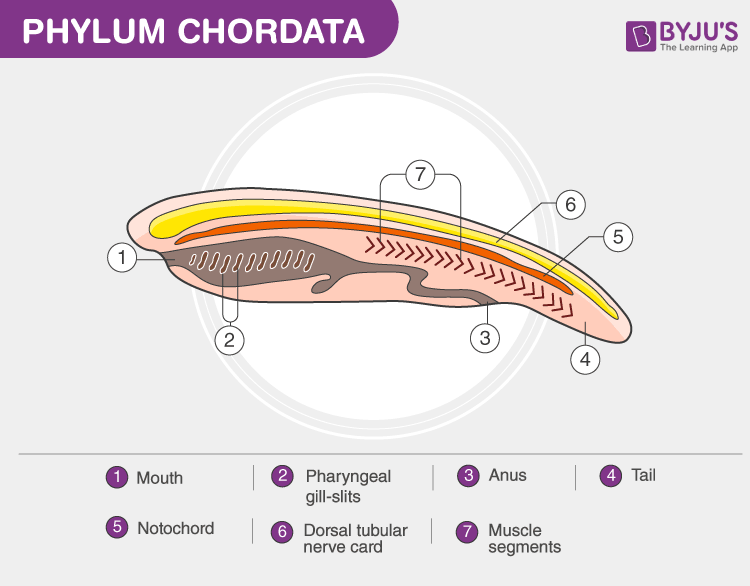Phylum Chordata is classified into three subphyla namely – Cephalochordata (lancelets), Tunicata or Urochordata and Vertebrata. The Cephalochordata and Urochordata are together termed as Protochordates.
Lancelets
Lancelets or Amphioxus are fish-like chordates that are grouped under the order Amphioxiformes. They mostly resemble primitive fishes and are benthic organisms. They are distributed in subtropical, tropical and shallow subtidal temperate zones. The lancelets show gonochorism, where there are two separate sexes. The organisms reproduce through external fertilization.
They are usually 1 to 3 inches in size. The lancelet species differ from each other by the pigmentation of their early larvae or by the number of myotomes. They have a transparent fish-like body with a poorly developed tail fin and gill slits. They do not have any paired fins.

Tunicates
They are marine invertebrates that have lost their myomeres. Tunicates replicate by budding and forming colonies. Some of them are solitary sessile organisms. They are filter feeders with siphoning mechanisms. They use incurrent and excurrent siphons to draw and expel water, respectively.
Ascidians are the largest tunicates. Their body is surrounded by a tunic or shell. The thickness of the tunic varies with species. It is composed of cellulose called tunicin along with proteins and carbohydrates. Inside the tunic is the mantle that is composed of blood vessels, nerve and muscle fibres. They have cerebral ganglion for nervous coordination and a developed heart for circulation.
Difference between Lancelets and Tunicates
Lancelets |
Tunicates |
|---|---|
|
Subphylum Cephalochordata. |
Subphylum Urochordata. |
|
The notochord extends from head to tail. |
The notochord is present only in the larval tail. |
|
They are motile. |
Adult tunicates are sessile. |
|
Lancelets are tiny fish-shaped organisms. |
Most tunicates are barrel-shaped creatures. |
|
They are gonochoric. |
They are hermaphroditic. |
|
They have myomeric segments. |
They do not have myomeric segments. |
|
They do not have tunica. |
They have tunica. |
|
They have protonephridia. |
They lack metanephridial structures and excrete through diffusion. |
|
They do not have a heart, and thus have a simple circulatory system. |
Their circulatory system includes a developed heart. |
Also Read: Protochordata
Frequently Asked Questions on Difference between Lancelets and Tunicates
What are benthic organisms?
Organisms that live in or near the sea bottom are called benthic organisms. The deep bottom of the sea, lake, river or stream is termed the benthic zone. Most benthic organisms are adjusted to deep-water pressure. They cannot survive on the surface of the water column. These organisms are either detritivores or scavengers. Examples – Sponges, Sea anemones, Ascidians, etc.
What are myomeres?
In most chordates, the skeletal muscles are arranged in blocks known as myomeres. The count of myomeres is sometimes used to identify the species or organism. It is seen as a unique feature in lancelets. They flex the body and aid the organism in locomotion.
What are protonephridia?
They are excretory tubules that are unique to lancelets, platyhelminths, and rotifers. They have solenocytes or flame cells that play a vital role in osmoregulation.
Explore: Difference between Protonephridia and Metanephridia
Keep exploring BYJU’S Biology for more exciting topics

Comments